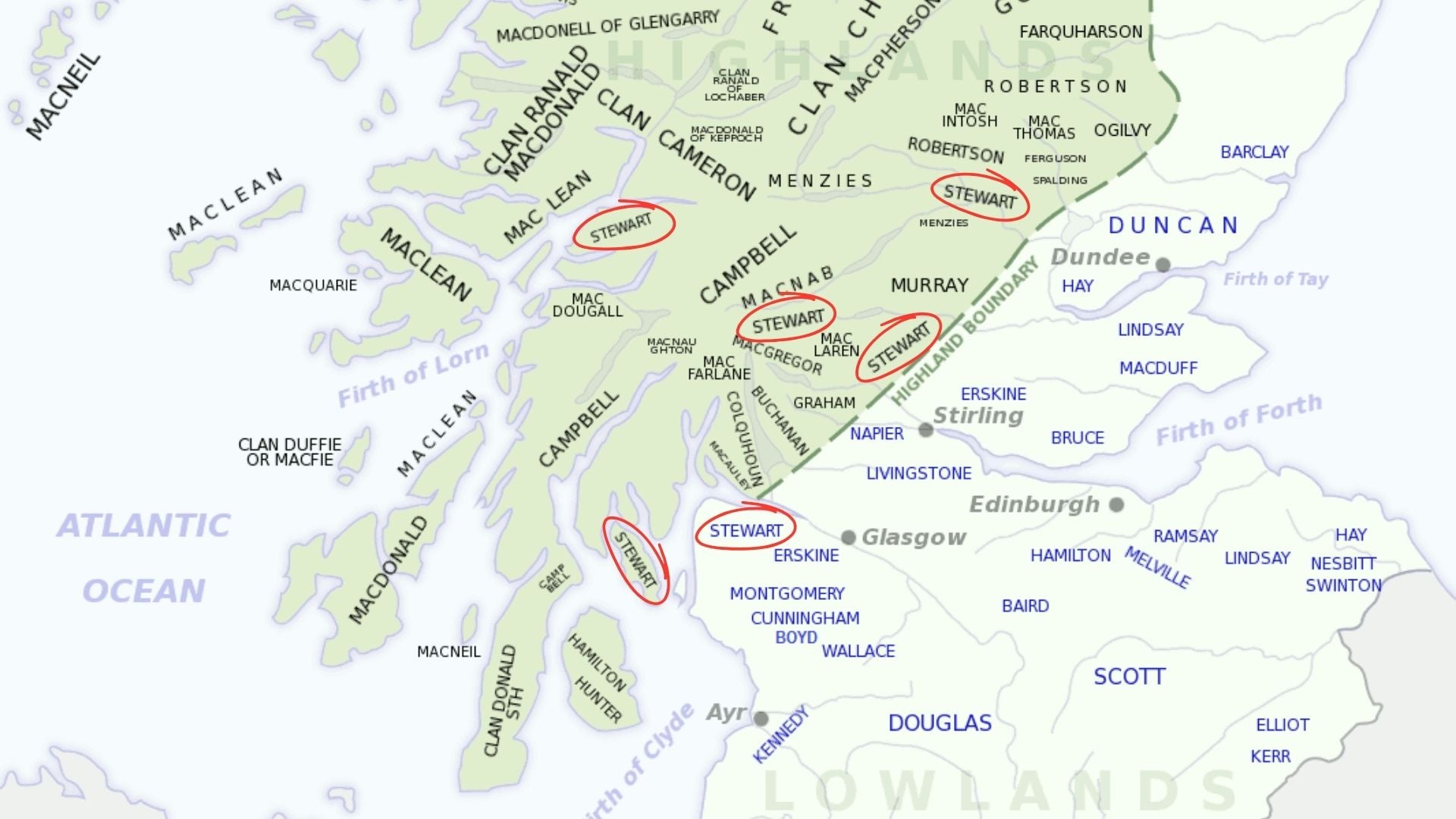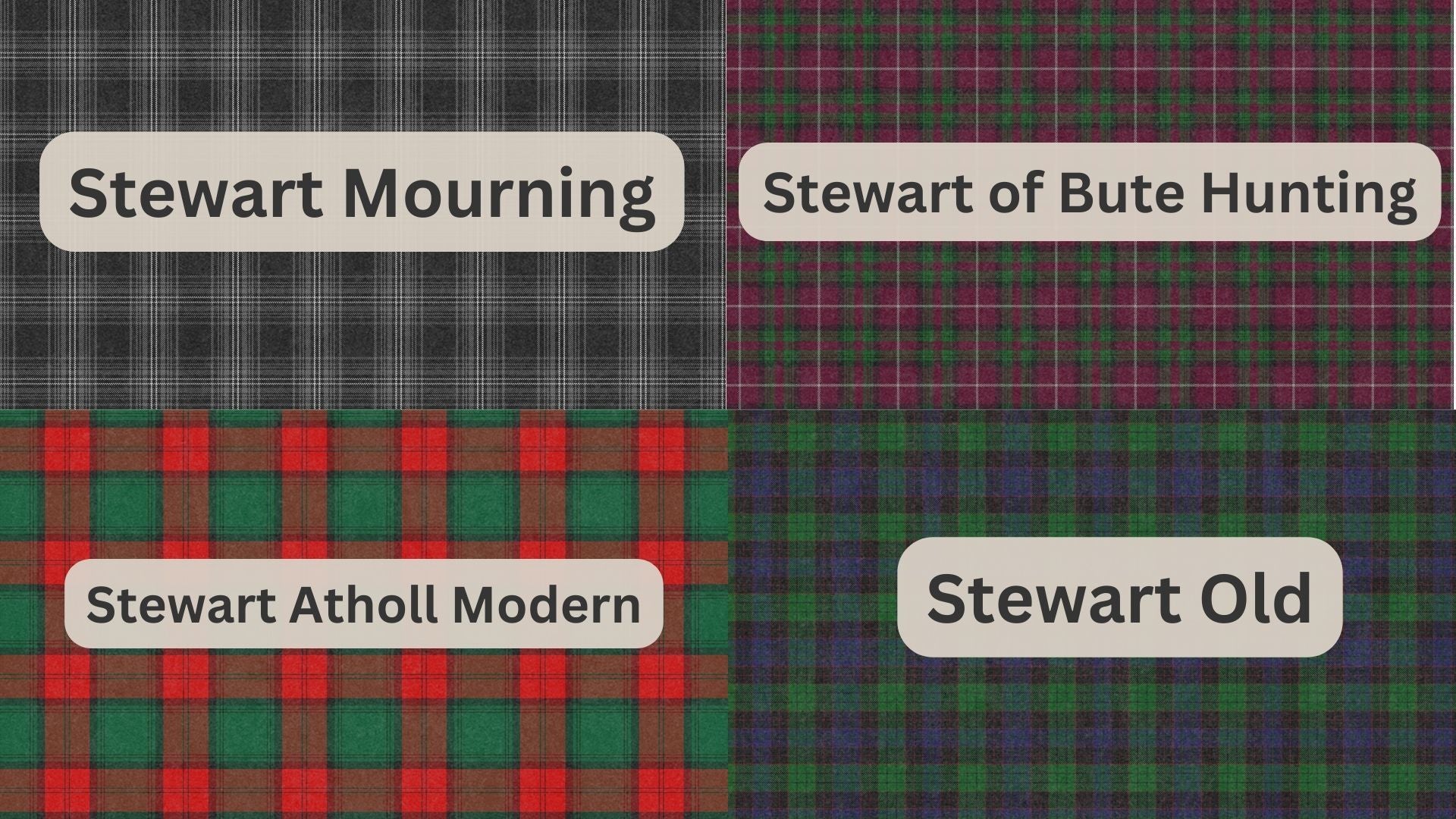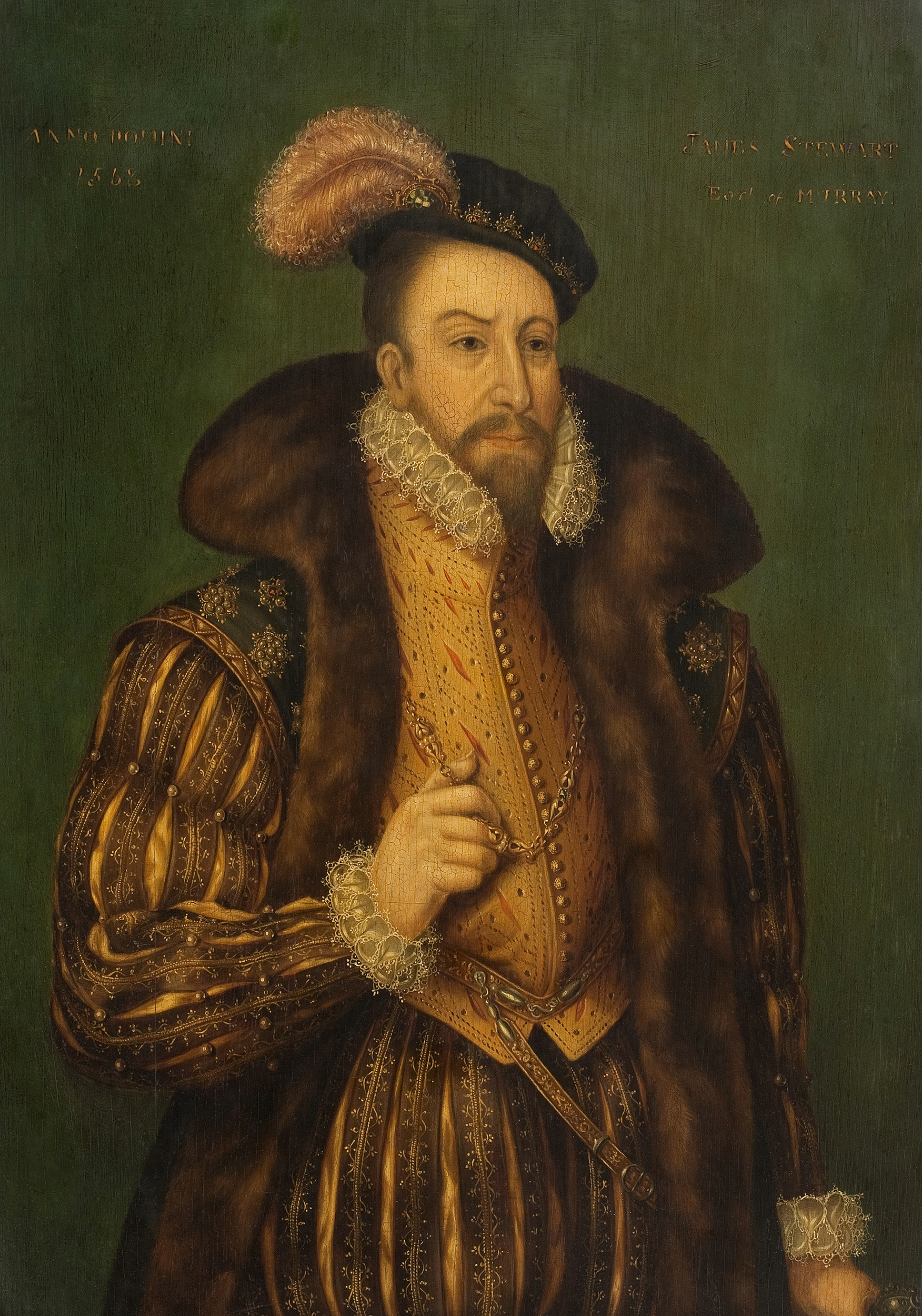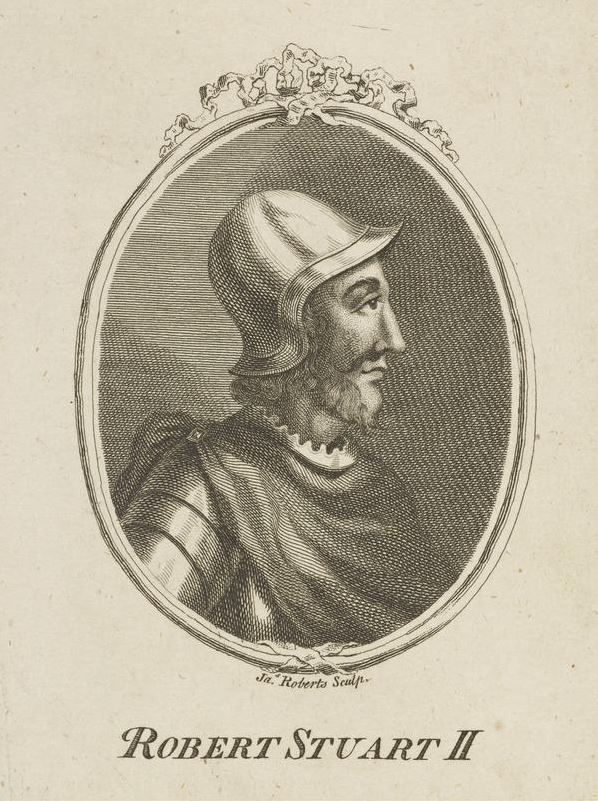Stewart Clan: Scotland's Royal Legacy Through the Ages
by Marcus Harris on Jan 27, 2024
Table of Content
1. Introduction
Nestled within the intricate tapestry of Scottish Clan history, the Stewart Clan, also known as the Stuart Clan, stands as a formidable pillar, shaping the narrative of legacy, power, and identity across centuries. This noble lineage has woven itself into the very fabric of Scotland's rich heritage, leaving an indelible mark that resonates through the annals of time.
As we embark on this historical journey, it becomes apparent that the Stewart clan's significance extends far beyond familial connections. Its influence has threaded through political landscapes, societal transformations, and the forging of a distinct Scottish identity. In this exploration, we will delve into the chronicles of the Stewart clan, unraveling the layers that have defined their enduring legacy. Join us as we traverse the highs and lows, victories and challenges, that have etched the Stewart name into the vibrant narrative of Scotland's past.
2. The Origins and Early Historical Roots
The Stewart clan originated in Scotland, a country renowned for its diverse landscapes. The clan's early history was significantly influenced by the geography of the region. Scotland's rugged terrain, encompassing mountains, valleys, and rivers, played a crucial role in shaping the lifestyle and activities of the Stewart people. Access to strategic locations, such as hill forts and natural defenses, influenced the clan's settlement patterns and interactions with neighboring clans.
The Stewart clan traces its roots to Walter FitzAlan, who became the 1st High Steward of Scotland in the 12th century. Walter's loyalty and service to the Scottish Crown earned him the hereditary position of High Steward, a role that laid the foundation for the Stewart dynasty. Walter FitzAlan and his descendants became prominent figures in Scottish history, eventually ascending to the throne.
The name "Stewart" itself has Norman origins, derived from the Old English word "stigweard," meaning steward or guardian. This name accurately reflects the historical role of the Stewart clan as stewards to the Scottish monarchs. Over time, the name became anglicized, solidifying the identity of the Stewart lineage.
In its early years, the Stewart clan operated within a feudal system, where loyalty to the monarch and land ownership were central aspects of their structure. The clan's cohesion was maintained through a system of familial ties, with loyalty to the High Steward ensuring unity among its members. The hierarchical structure within the clan played a crucial role in its ability to navigate the complex political landscape of medieval Scotland.

3. Unraveling the Symbolic Richness of the Stewart Coat of Arms
The crest features a pelican that holds significant symbolic meaning. When depicted in heraldry, the pelican is often seen as a symbol of self-sacrifice and nurturing care. This is due to the ancient imagery of a pelican piercing its own breast to feed its chicks with blood, representing parental sacrifice for the offspring's well-being.
Specifically, the pelican in the crest is Argent (silver or white), symbolizing purity and selflessness. Its wings are Or (gold), signifying nobility, virtue and glory. Most importantly, it is shown in her nest feeding her young, depicted in their natural colors (Proper) to emphasize familial bonds, sacrifice and nurturing instincts.
In combination, the imagery of a pelican Argent, winged Or, in her nest feeding her young Proper, embodies the core values of self-sacrifice, nurturing care and familial devotion within the context of the Stewart Clan's identity. This distinctive symbol serves as a meaningful representation of the clan's ideals and rich heritage.
The clan's motto "Virescit vulnere virtus" translates to "Courage grows strong at a wound." It concisely conveys how true strength and bravery can emerge and intensify when facing adversity. The motto highlights the transformative power of challenges in fostering resilience and inner courage.

4. Stewart Lands and Territories
4.1 Core Territories
The clan's central power bases included Renfrewshire, Lennox, and Menteith. Renfrewshire, located along the River Clyde west of Glasgow, was among the Stewart's earliest possessions. It provided strategically located lands from which they administered their growing domains.
Lennox, situated along the western shores of Loch Lomond, became a Stewart stronghold through marriage in the early 14th century. This acquisition enlarged their territories and gave them control of a key passageway between the lowlands and Highlands.
Menteith, a fertile region south of Loch Lomond, bordered the Stewart's ancestral Lennox lands. Gaining title to Menteith in the 1320s further consolidated their central power across western Scotland.
4.2 Expansion through Marriage
Seeking to expand their influence, the Stewarts employed marriage alliances to acquire new territories. In the 1330s, Walter Stewart married Marjorie, daughter and heiress of Duncan, Earl of Lennox. This married union brought the Isle of Bute under Stewart's domain.
Another key union was between Robert Stewart, 2nd High Steward of Scotland, and Euphemia, Countess of Monteith in right of her first husband. Their marriage in 1359 transferred ownership of Monteith to the Stewarts, adding this strategically located region to their growing portfolio of lands.
4.3 Continued Expansion
Subsequent generations continued expanding Stewart's territory. James Stewart, the 3rd High Steward of Scotland, acquired new estates in Aberdeenshire and Kincardineshire through inheritance. His grandson Robert Stewart, 1st Duke of Albany, gained lands in Fife and Strathearn through royal grants.
By the 15th century, the family's vast lands spanned central Scotland from Clyde to Forth. As their territories expanded greatly through these marriage alliances and strategic acquisitions, the Stewart clan rose to become one of the most powerful in Scotland.

5. Principal Branches of the Illustrious Clan
Here are some of the main branches of the Stewart clan:
Stewarts of Atholl: Based in the Atholl region with a seat at Blair Castle. Ruled vast estates and held the title of Earl of Atholl. Played important political and military roles under notable Earls such as John Stewart and John Murray.
Stewarts of Balquhidder: Branched from the ancestral Stewart lands in Lennox. Dominated lower Balquhidder Valley and strengthened clan connections across central Highlands. Provided officers to Clan Stewart forces.
Stuarts of Bute: Descended from the acquisition of the Isle of Bute in the 1330s. Governed island territory from castle seats like Rothesay and ruled sea lanes between Argyll and Kintyre. Maintained Stewart authority in western waters.
Stewarts of Appin: Branch established in rough Appin district facing Lorne region. Ruled coastal areas from castles like Castle Sween and Kilmahog. Supplied fighting men from the local territory to support clan ventures.
Earls Castle Stewart: Founded in early 15th century through a bestowal of lands in Wigtownshire. Held hereditary title of Earl of Castle Stewart. Governed the southwestern Scottish coastlands and Angus-Kintyre border region.
Stewarts of Menteith: Ruled the Menteith region south of Loch Lomond from ancestral strongholds like Port of Menteith. Governed strategic central lands along majorrouteways of the Trossachs. Maintained a cadet presence in the area.
Stewarts of Grandtully: Located in northern Perthshire around Rannoch Moor. Governed upland estates and waters from Castle Grandtully. Provided communication links between central and northern clan highland territories.
Additionally, there were many other cadet branches such as the Stewarts of Blackhall, Stewarts of Garth, and Cadet Stewarts of Kinfauns,… which developed widely across Scotland over time. These branches further split into new cadet lines, demonstrating the extensive spread of the kindred across medieval Scotland and contributing to the clan's formidable power.

6. Chronicles of Eminence: Distinguished Figures that Shaped Stewart History
Over centuries, notable Stewarts rose to prominence through leadership, military prowess, and royal service. These influential figures cemented the clan's power while expanding their renown. Here are the most typical people
Walter FitzAlan, 1st High Steward ( c. 1090 – 1177)
Walter FitzAlan was a trusted adviser to King David I and King Malcolm IV of Scotland. As the founder of the Stewart dynasty , he played a vital role in the establishment of the family's prestige and influence. Appointed as the High Steward of Scotland , a hereditary office, Walter laid the foundation for the future Stewart kings of Scotland. His leadership in military and administrative roles contributed significantly to the stability of the Scottish kingdom during his time.
Robert II (1326-1390)
Robert II became the first Stewart king of Scotland in 1371, establishing the Royal House of Stewart, which ruled Scotland for over 300 years. Though his reign was not without challenges, he laid the foundation for the future stability and longevity of his dynasty, which played a key role in maintaining Scotland's independence.
Murdoch Stewart, 1st Duke of Albany (1362-1425)
Murdoch Stewart served as regent of Scotland during the captivity of James I in England. Although he held vast power and authority inherited from his father, Murdoch's administration was considered weak, leading to his downfall and execution for treason upon James I's return to Scotland in 1424.
John Stewart, 1st Earl of Atholl (1440–1512)
Was a significant Scottish nobleman and military leader. Born in 1440, he was the son of James Stewart, 1st Earl of Buchan. Stewart became the Earl of Atholl in 1465 and played a crucial role in Scottish politics and military campaigns of the late 15th century. Notably, he served as a Guardian of Scotland, navigating the challenges of internal strife and external threats. His tenure was marked by efforts to support the Stewart dynasty and stabilize Scotland during a tumultuous period. He passed away in 1512, leaving a lasting impact on Scottish history.
Alexander Stewart, Earl of Mar (1375–1435)
Alexander Stewart was a victorious military leader who asserted authority in the northern Highlands through his triumph at the Battle of Harlaw in 1411. He led the forces loyal to the Scottish crown against Donald, Lord of the Isles, preventing a significant incursion into central Scotland.
James Stewart, 1st Earl of Buchan (c. 1442–1499)
James Stewart was a prominent Scottish nobleman and military leader. He became Constable of France and fought for the French crown during the Hundred Years' War, playing a key role in the Battle of Baugé in 1421. He earned his title, Earl of Buchan, for his loyalty to the Scottish and French crowns, and his military contributions were notable.
John Stewart, Earl of Buchan (c. 1381–1424)
John Stewart was a Scottish nobleman and military commander. As a supporter of the Auld Alliance , he led Scottish forces in France during the Hundred Years' War. He is best known for his victory at the Battle of Baugé in 1421 and his subsequent death at the Battle of Verneuil in 1424, where he fought against the English.
Matthew Stewart, 2nd Earl of Lennox (1449-1513)
Matthew Stewart was a prominent Scottish nobleman who played a key role in the political and military affairs of 15th-century Scotland. While his early relationship with the crown was complicated, he ultimately provided support to the monarchy and fought for Scotland at the Battle of Flodden in 1513, where he perished alongside King James IV . His influence was significant in clan politics and in shaping the turbulent events of his era.
Through such prominent figures’ efforts, the clan gained unparalleled power and renown, securing Scotland's independence for over 300 years under the Royal House of Stewart.

7. Cultural Treasures and Traditions
The Stewart Family's cultural heritage is a tapestry woven with rich threads of history, tradition, and unique ceremonies that distinguish their legacy. Delving into the cultural background and exploring the distinctive ceremonies and traditions unveils the depth of the Stewart Family's connection to their roots.
7.1 Cultural Background of the Stewart Family
The Stewart Family's cultural background is deeply embedded in the historical narrative of Scotland. Originating from the 12th century with Walter FitzAlan, the family has evolved and absorbed the diverse cultural influences of the Scottish landscape. The fusion of Celtic, Norman, and other regional elements has given rise to a unique Stewart cultural identity.
The iconic Royal Stewart tartan, with its vibrant red, green, and blue hues, symbolizes the family's distinctive presence. Whether worn during festivals, clan gatherings, or in everyday life, the tartan serves as a visual testament to the Stewart Family's cultural pride and connection to their ancestral heritage.
7.2 Unique Ceremonies and Traditions
The Gathering of the Stewarts: An annual clan gathering brings together members of the Stewart Family from various branches, reinforcing familial bonds and celebrating shared heritage. This event serves as a platform for the exchange of stories, the passing down of traditions, and the revitalization of cultural connections.
The Stewart Ceilidh: A lively and spirited dance known as the Stewart Ceilidh is a cherished tradition. Accompanied by traditional Scottish music, this dance reflects the family's love for artistic expression and serves as a vibrant celebration of their cultural identity.
The Stewart Coronation Ritual: During significant family milestones, such as the ascension of a new family head, the Stewart Coronation Ritual is conducted. This ceremony, deeply rooted in historical precedence, involves symbolic gestures and recitations that emphasize the continuity of the family's cultural legacy.
Tartan Day Celebrations: The Stewart Family annually observes Tartan Day with a series of events celebrating Scottish heritage. From traditional bagpipe performances to storytelling sessions, these celebrations pay homage to the family's roots and foster a sense of pride in their distinctive cultural identity.
Stewart Family Crest Unveiling: A momentous occasion in the family's calendar is the unveiling of the Stewart Family Crest. This event, marked by a formal ceremony, emphasizes the significance of familial symbols, heraldry, and the visual representation of the family's cultural pride.
In essence, the Stewart Family's cultural heritage is a dynamic fusion of historical influences and unique traditions. Through distinct ceremonies and a commitment to preserving their cultural background, the family ensures that their legacy remains vibrant, relevant, and deeply rooted in the intricate tapestry of Scottish history.
8. Role in Scottish Politics
The participation of Clan Stewart in key political events has left an indelible mark on the landscape of Scottish politics, weaving a narrative that intertwines the clan's legacy with the broader tapestry of the nation's governance.
Stewart Monarchs: The most prominent and enduring political contribution of Clan Stewart lies in the series of monarchs it produced. From Robert II, the first Stewart monarch, to James VI, who united the crowns of Scotland and England, the Stewarts played a pivotal role in shaping the political landscape of Scotland. Their reigns witnessed significant developments, including the Renaissance, the Reformation, and the Union of the Crowns.
Wars of Independence: Clan Stewart actively participated in the Wars of Independence, with prominent members like Walter Stewart and Robert Stewart, who later became Robert II, distinguishing themselves on the battlefield. Their military prowess and strategic acumen contributed to the broader political struggles of the time.
Stewart-Hamilton Feud: The Stewart Clan's involvement in the Stewart-Hamilton feud during the 16th century showcased its influence in regional politics. The feud, marked by a series of conflicts, alliances, and betrayals, underscored the complex political dynamics in which the Stewarts were entangled.
Jacobite Uprisings: Clan Stewart played a significant role in the Jacobite uprisings of the 17th and 18th centuries, aligning themselves with the cause of the exiled Stuart monarchs. Notable figures like Charles Edward Stuart, commonly known as Bonnie Prince Charlie, sought support from the Stewarts in their quest to reclaim the throne.
Political Alliances: Throughout Scottish history, the Stewarts formed strategic political alliances to secure their positions and influence. Marriages, treaties, and familial connections were leveraged to navigate the complex political landscape, showcasing the clan's astuteness in political maneuvering.
Acts of Parliament: Members of Clan Stewart actively participated in parliamentary activities, contributing to the legislative framework of Scotland. Their involvement in the passing of various acts reflected not only their political influence but also their commitment to shaping the governance structures of the nation.
Post-Union Political Landscape: Following the Union of the Parliaments in 1707, Clan Stewart adapted to the evolving political landscape. Stewart family members continued to hold influential positions in both Scottish and British politics, contributing to the governance of the newly formed United Kingdom.
In summary, Clan Stewart's role in Scottish politics is a multifaceted saga marked by royal lineage, military valor, political intrigue, and adaptability to changing political landscapes. Their contributions have left an enduring imprint on the political history of Scotland, shaping the destiny of the nation across centuries.

9. Architectural Contributions
The Stewarts have left an enduring legacy in the realm of architecture, contributing to Scotland's landscape with a collection of notable castles, homes, and estates. This overview highlights the architectural endeavors that showcase the clan's commitment to creating enduring structures that stand as testaments to their influence and legacy.
Stirling Castle: One of the most iconic castles associated with the Stewarts is Stirling Castle. Positioned strategically atop Castle Hill, it served as a royal residence for many Stewart monarchs. The castle's architecture reflects a blend of medieval and Renaissance styles, symbolizing the Stewarts' influence during pivotal periods in Scottish history.
Falkland Palace: Falkland Palace, located in Fife, is another architectural gem associated with the Stewarts. The palace, with its distinctive turrets and Renaissance architecture, served as a favored residence for Stewart monarchs, including James VI. The beautiful gardens and intricate interiors speak to the clan's appreciation for aesthetics and luxury.
Aubigny Castle: Nestled in the picturesque Scottish countryside, Aubigny Castle stands as a testament to the Stewart Clan's architectural endeavors. The castle, characterized by its tower house design, exemplifies medieval Scottish architecture and served as a stronghold for the Stewarts.
Lennoxlove House: Situated in East Lothian, Lennoxlove House is a historic mansion with ties to the Stewart family. Originally known as Lethington Castle, it underwent renovations in the 17th century, showcasing a combination of Renaissance and Jacobean architectural influences. The house stands as a reflection of the Stewarts' evolving tastes and styles.
Castle Stuart: Built in the early 17th century, Castle Stuart in the Highlands is a prime example of the Stewarts' contributions to Scottish architecture. With its distinctive turrets and strategic location overlooking the Moray Firth, the castle is a blend of military fortification and elegant design.
Huntingtower Castle: Located near Perth, Huntingtower Castle features a unique architectural design with two separate towers connected by a central block. The Stewarts' influence is evident in the castle's history, where they played a role in its ownership and development.
Traquair House: Traquair House, the oldest inhabited house in Scotland, has longstanding connections with the Stewarts. Located in the Scottish Borders, its architecture spans various periods, including medieval, Renaissance, and later additions. The Stewarts' influence is woven into the historical fabric of Traquair House.
Balvenie Castle: Situated in Dufftown, Moray, Balvenie Castle is a historic fortress with ties to the Stewarts. The castle dates back to the 13th century and underwent renovations in subsequent centuries. Its architecture showcases a mix of medieval and Renaissance influences, making it a distinctive example of the Stewarts' contributions to Scottish castle design. Balvenie Castle stands as a testament to the clan's enduring presence in various regions of Scotland and their influence on the architectural landscape
These architectural contributions collectively narrate the story of the Stewart Clan's impact on the built environment of Scotland. Each structure reflects not only the clan's prominence in various historical periods but also their appreciation for architectural innovation and the creation of enduring landmarks that continue to captivate visitors to this day.

10. Conclusion
In essence, the Stewart Clan's profound impact is evident not only in the realms of cultural heritage, politics, and architecture but also in the intricate tapestry of Scottish history. From their pivotal role in political events to the creation of iconic castles and the preservation of rich traditions, the Stewarts have left an indelible mark. As custodians of a unique legacy, their story invites us to explore the dynamic interplay between heritage and influence. This exploration prompts us to reflect on the enduring significance of clan identities in shaping the broader narrative of Scotland's past and present.
As we complete this chapter in Stewart Clan history, let us not only reflect on the past but also accept its profound lessons. Resilience, unity, and legacy preservation emerge as guiding beacons for everyone. Explore our carefully picked assortment of tartan products to immerse in the Stewart Clan's ageless traditions. Connect with the enduring energy that defines the Stewarts and incorporate a piece of their lively heritage into your present.
Frequently Asked Questions
Which castles are associated with the Stewart Clan?
The Stewart Clan has ties to several notable castles, including Stirling Castle, Falkland Palace, Aubigny Castle, Lennoxlove House, Castle Stuart, Huntingtower Castle, Traquair House, and Balvenie Castle.
What is the meaning of the Stewart Clan motto, "Virescit vulnere virtus"?
The motto translates to "Courage grows strong at a wound," emphasizing the transformative power of challenges in fostering resilience and courage.
How did the Stewart Clan participate in the Wars of Independence?
Prominent members like Walter Stewart and Robert Stewart actively participated in the Wars of Independence, showcasing military prowess and contributing to the clan's political influence.
What is the Stewart Clan's role in the Jacobite uprisings?
The Stewarts played a significant role in the Jacobite uprisings, aligning with the cause of the exiled Stuart monarchs, including Bonnie Prince Charlie.











